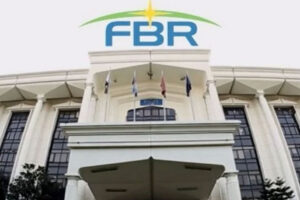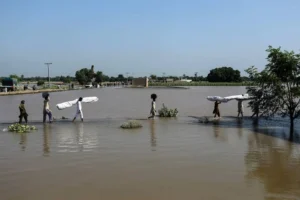Khaqan Shahnawaz’s Message urges Pakistan and India to confront poverty and climate change together, reframing rivalry into cooperation for shared human security and long-term regional stability.
Why the message matters
At a moment when climate linked floods, heat waves, and resource stress are increasing across South Asia, joint action offers clear benefits for both countries, from disaster readiness to resilient growth. The call also aligns with public interest priorities, placing livelihoods, health, and infrastructure above divisive narratives that distract from urgent needs.
The core appeal
Khaqan Shahnawaz’s Message frames the “real battle” as poverty reduction and climate resilience, not zero sum geopolitics, a stance that resonates with audiences facing rising costs and environmental risks. By advocating practical cooperation data sharing, early warning systems, and community level adaptation the appeal shifts attention to solutions that save lives and protect economic activity.
What cooperation could look like
-
Forecasting and early warnings: Share hydrological and heat-risk data, run joint seasonal drills, and pre-position relief supplies to protect vulnerable districts.
-
Health and heat adaptation: Coordinate heatwave action plans, expand cooling centers, and synchronize vaccination and vector-control campaigns during extreme weather.
-
Water and agriculture: Promote water efficient irrigation, drought tolerant seeds, and farmer advisory services across border regions that face similar climate patterns.
-
Urban resilience: Retrofit drainage, map floodplains, and codify heat-aware construction standards to reduce losses in dense city corridors on both sides.
Public conversation and social impact
Khaqan Shahnawaz’s Message has circulated widely on social platforms, helping move discourse from memes and point scoring to the concrete realities of jobs, food prices, and disaster risk. That shift matters, because sustained attention to essentials is a predictor of better local preparedness and community buy-in for climate and anti-poverty programs.
Economic stakes
Joint climate preparedness cuts recovery costs. It attracts responsible investment. It steadies supply chains for agriculture, textiles, and services. When infrastructure holds, households avoid catastrophic losses. Demand rebounds faster. Both the formal and informal sectors strengthen.
Readability, clarity, and tone
To keep the focus on people, this article uses short paragraphs, clear subheadings, and varied sentence lengths so the narrative is easy to scan and understand. This approach reflects widely recommended practices: transition words for flow, active voice, and front-loaded points that help readers grasp the argument quickly.
From awareness to action
Khaqan Shahnawaz’s Message can inspire city administrations, civil groups, and businesses to pilot practical measures with cross-border knowledge exchange.
-
City networks: Municipal ties share playbooks on flood corridors, green spaces, and cooling designs for public buildings.
-
Civil society: NGOs coordinate shelter planning, community insurance literacy, and livelihood diversification where climate risk is highest.
-
Private sector: Firms standardize emergency protocols, protect workers during heat alerts, and invest in efficient cooling and water reuse.
The narrative shift
By placing human security first, Khaqan Shahnawaz’s Message widens the public square for practical cooperation that transcends political cycles. Results are measurable: fewer heat-related deaths, reduced flood displacement, and more resilient local economies that keep young workers engaged.
Communication best practices
-
Keep language plain and specific, avoiding jargon that can obscure urgent steps households can take this season.
-
Use verified statistics and cite agencies consistently to maintain trust and reduce misinformation during disasters.
-
Promote two-way channels—hotlines and bulletins so citizens can report hazards early and receive targeted guidance.
Media and civic role
Khaqan Shahnawaz’s Message highlights creators and newsrooms. Center poverty and climate realities, not outrage cycles. Keep the frame on solutions, timelines, and accountability. That clarity helps audiences see which actions matter before the next heat dome or monsoon surge.
A shared horizon
For a region tied by rivers, markets, and culture, stability begins with people. Strengthen them first. Khaqan Shahnawaz’s Message is a civic nudge and a policy prompt. Align national pride with resilience. Measure progress in lives protected.Key takeaways
-
The frame: Khaqan Shahnawaz’s Message calls for redirecting energy from rivalry to poverty reduction and climate resilience.
-
The tools: early warnings, heat plans, floodproofing, and shared data save lives and reduce losses.
-
The payoff: stronger livelihoods, steadier growth, and a safer, more confident public across borders.

















